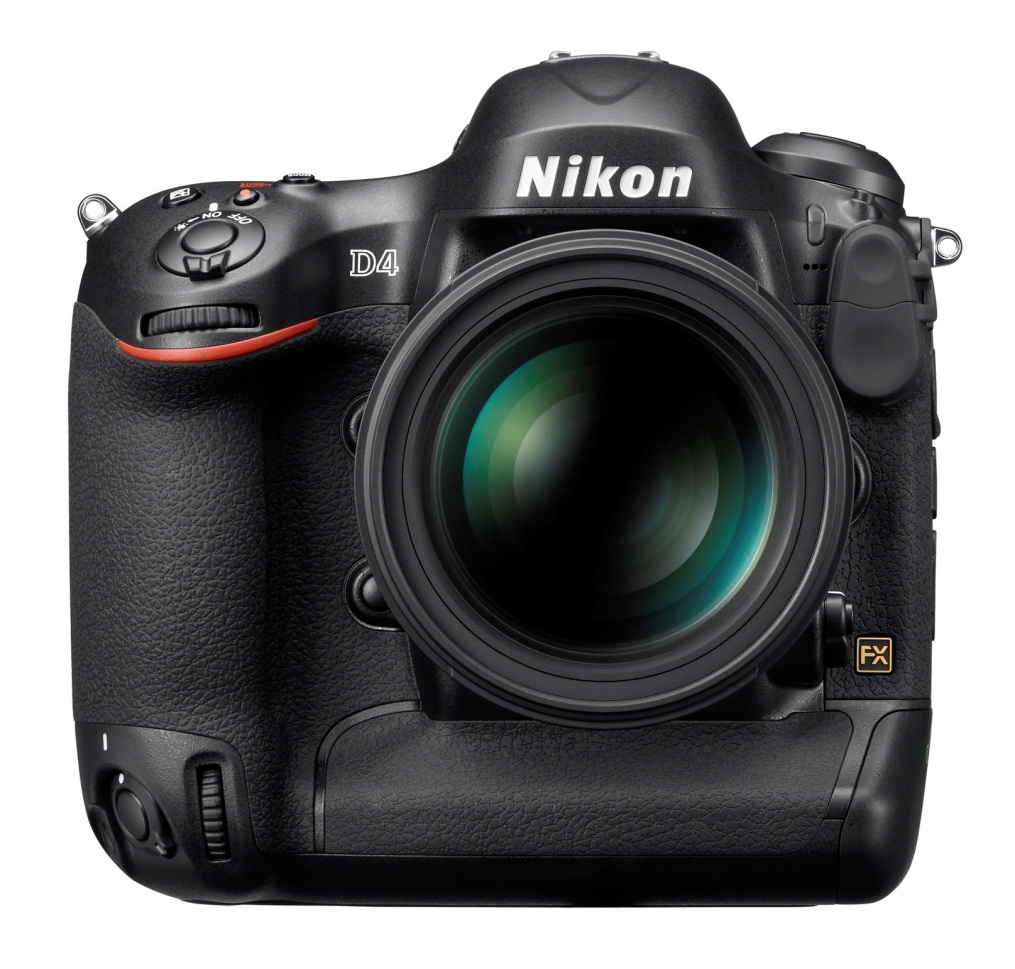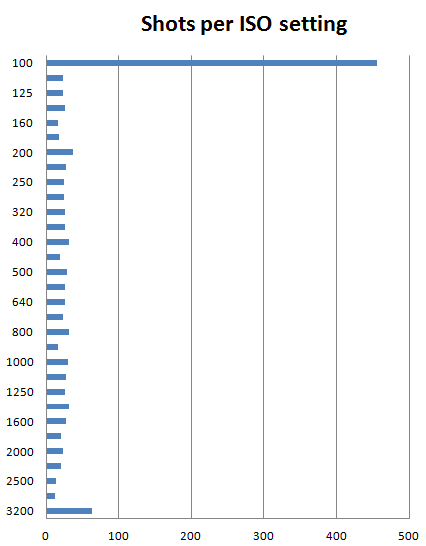Time to go full frame?
Nikon announced the D4 last last week, a $6,000 successor to the Nikon D3s:
The image is Nikon’s, and links to their blog post announcing the D4. It’s a 16.2MP camera, only a little more than the D3S, and essentially the same as the D7000 (which is what I use, and is the latest model in Nikon’s line of cameras that use smaller DX sensors). It’s marquee features are awesome low light performance, better video than any prior Nikon camera, and very fast shooting and auto-focus.
According to NikonRumors.net (which was spot on with the D4 prediction), the replacement for the less (but still) expensive full-frame D700 is also forthcoming. They say it’s named the D800, and will be a whopping 36MP – though significantly slower in terms of shooting speed than the D4 as a result of this. It will probably have a body that’s more like the D700, which is to say, much smaller than the monstrous D4 (which appears to be similar in size to the D3 that I used for a few months). Is one of these for me?
I’ve been planning to eventually get a full-frame Nikon for a while (after having used both the D700 and D3 for a period of time). Indeed, any of the lenses I’ve recently bought have been full-frame lenses that will continue to work when and if I go full frame. I commented previously on why the D3 was great but not for me; the D700 is also a fantastic camera, but it’s not video capable and because I’m a non-photographer often shooting the family, I’m not going to carry a separate camera (even a compact one) just to shoot video. The D700 is also now 3.5 years old, and at the improvement that it represents over the D7000 wasn’t really enough to justify it for me.
Why do I still want a full frame camera, with smaller cameras now still being so good? Because we’re still so often indoors (did you know that it rains in Seattle during the winter?), at events like birthdays or holiday celebrations, in lighting conditions that aren’t great and can’t easily be changed. The D7000 is great, but it is at it limits in many of these situations – ISO 3200 (the highest I’m willing to go), 1/80th of a second (the lowest I’m willing to go), and that’s if I lug around a big, heavy f/2.8 lens – because the only fast prime that’s even moderately wide on a DX camera is the $2,000 24/1.4.
Do I just think I’d want this, or would it actually matter? Per a previous post, looking at the real data here can help:
You can see that I have a clear preference for base ISO – but of course, that’s only possible outside and even then the light needs to be good. As I mentioned a couple of posts ago, I use flash on 30% of all shots, mostly the indoor ones; in many cases, it would look more natural if I could have avoided flash on those shots. Also, I definitely delete quite aggressively and I definitely delete high ISO shots more often. It’s also not obvious from the above, but 12.5% of shots are at greater than ISO 1600; not a huge number, but not insignificant either.
The other important thing not shown is that because I shoot with auto-ISO by default and a minimum speed from 1/30 to 1/200 depending on the situation, every single shot above ISO 100 is because shutter speed would otherwise be too low. At ISO 3200, many of the shots are even below the set minimum shutter speed (since ISO won’t raise any higher beyond that point). As a side note, Excel’s handling of fraction imports is completely stupid – there’s no way to have the shutter speeds treated properly. You can format things so that typed data shows up correctly, but when importing, copying/pasting, or even search/replacing, values like 1/60 ALWAYS get treated like a date. Extremely annoying. Also incredibly stupid for Excel to import a column from a text file, and convert 1/60 to a date while leaving 1/100 as text in the same column.
In any case, whether it’s the 30% of shots where I was forced to use flash, the 12.5% of shots taken at higher ISOs, the shots where I lowered minimum shutter speed to get a lower ISO, or the shots that I just delete outright because of the loss of image quality, a fairly large fraction of my pictures would benefit from even better low light performance.
So, I was quite looking forward to the new FX lineup. Is what I’m looking for finally here? In a word, no:
- The D4 has exactly the sensor I want. It has incredible low light performance, better even than the D3S – as a consequence of not pushing the MP count too high.
- Like the D3, the body of the D4 just doesn’t work for me. It’s just too big to carry around with the kids.
- The D4 also still lacks a built-in flash. Not only does this mean you don’t have flash if you find yourself somewhere unexpectedly dark, but if you want to do any off-camera flash then you need at least two flash units.
- The D800 will probably have a reasonable body (like the D700), but the rumored ISO range is no better than the D700, so it doesn’t do the one thing I really wanted a full frame camera for – low light.
- I don’t really care for the rumored 36MP resolution; in fact, that will make files ridiculous large and thus slow to process. Almost none of my lenses are fully capable of 36MP-level sharpness anyways, and I have some pretty good lenses.
- At least video will be built in, but that on its own isn’t enough of a reason to jump on the boat.
When there was a brief rumor that suggested the D4 was going to be much smaller and lighter than the D3S, I seriously thought I might consider it (though the price is still stratospheric). If, as with the D700/D3, the D800 simply had the D4 sensor but in a less fast, less professional body, I’d have been delighted and ordered one immediately. Instead, Nikon seems to have defined the target “low end” full frame camera based on the Canon 5D Mark II – and lost some of my interest as a result.
But we’ll see. If the D800 produces IQ at a given output size that’s 1-2 stops better than the D700, it might still be a real contender for my dollars…


One Comment
Pingback: